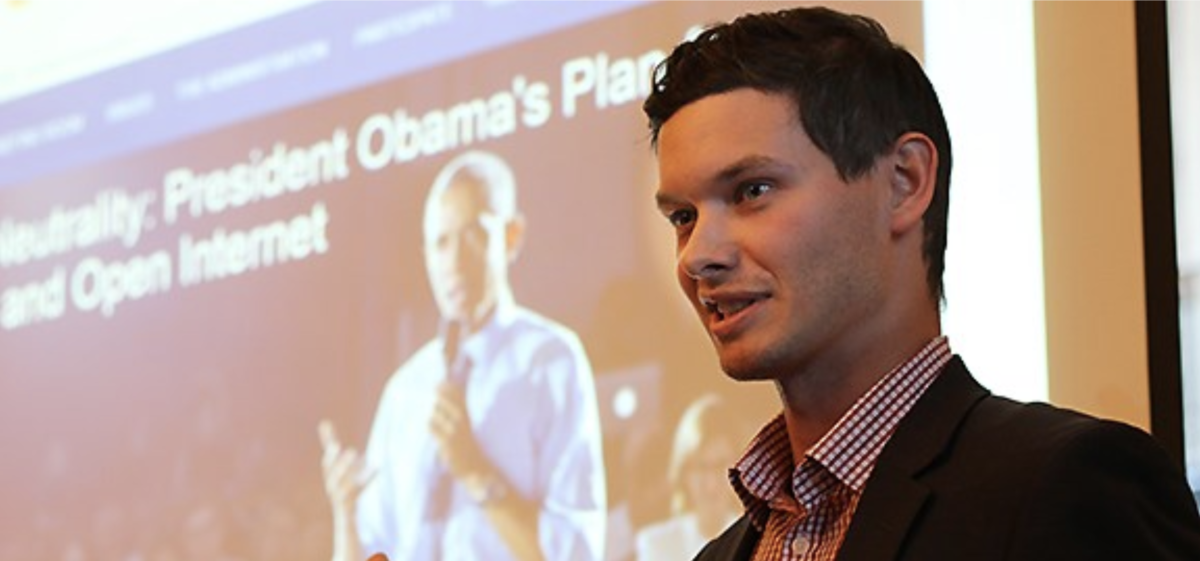COS Systems Brings Swedish Knack for Tech to Open Access Networks, Hopes for Spacious Skies on American Plains
'Some are scared when something new comes. Sweden is always early.'
David Jelke

May 20, 2020 — Sweden has a knack for being the first to the table of tech. Ericsson, a telecommunications company based in Stockholm, introduced the world to the first telephone switch and the first mobile phone. Sweden is home to several game-changing tech companies: Spotify, Skype, Candy Crush, Minecraft and Pirate Bay, to name a few.
Sign up for Digital Infrastructure Investment 2024:
 Broadband BreakfastBroadband Breakfast
Broadband BreakfastBroadband Breakfast
“Their valuations were just crazy, insane,” Isak Finér, chief marketing officer of information technology solutions provider COS Systems, said of the Swedish companies’ stock prices at their respective heights.
Part of the Swedish environment and culture is being primed for innovative technology, Finér told Broadband Breakfast in an interview: “Some are scared when something new comes. Sweden is always early.”
This is especially true for technologies that enhance efficiency in their work and in their personal lives. “People like to be self-reliant,” he said. But it also means that “they don’t want to talk to someone if they don’t have to.”
Sweden is also ahead of the curve in implementing open access networks, which is where COS Systems thrives.
Creating a model ecosystem for broadband in the elongated country
An open access network is a business model for providing internet to homes and institutions that is more competitive than the model most prevalent in the United States. In the U.S. model, big communications companies dominate. Not only do companies like AT&T, Comcast and Verizon own their broadband infrastructure, they also operate it. And they offer broadband internet services on top of the infrastructure.
Open-access networks are much more common outside of America. They can be a little complicated to visualize. If you think of a broadband network as a railroad, the train tracks represent the network of underground fiber-optic cable that feeds high-speed internet into homes and businesses throughout the country.
The current dominant model in the U.S. calls for the same people who own the “train tracks” to also supply the “trains,” or in this case the internet services.
An open access model, by contrast, allows train cars run by CarCo, a completely different company, to run on the railroad tracks owned by TrackCo. This gives the consumer more access to wider choices.
A willingness to adapt to the newest technology, along with the Swedish affinity for self-reliance, created a fertile environment for open access networks to take root. In 1994, Sweden’s version of AT&T, Telia, began charging “outrageous prices” for internet service, said Finér.
In response, Swedish municipalities revolted and began building their own networks.
Sweden proves fertile ground for companies that want to help open access networks grow
In addition, several aspects of Swedish demographics allowed for this revolution to flourish and become the norm within the Scandinavian nation: A consensus on the role of municipal governments, urbanization, digital literacy and a high standard of living, to name a few. That, paired with a unique government-sponsored program where employees could borrow computers from their employers for free, allowed the new paradigm of distributing internet to bloom.
COS Systems emerged in 2008 as a company that sold software to help network operators assess the demand for broadband in an area, called “demand aggregation,” and automatically juggle a host of competing service providers on one fiber optic cable.
They initially found success in Sweden, but realized that much of the country’s fiber had already been built out by the early 2010s. In 2013, they set their sights on America.
The COS Systems business model is one of practicality and logic: Invest in the neighborhoods (which became known as “fiberhoods” when Google Fiber got in the picture) that want internet the most, and which will in turn generate the greatest revenue.
This greater long-term access to capital can then be used to build out fiber in less profitable areas, which very often are the more rural or less dense regions.
At that point of the process, Finér said, “it’s up to the neighborhood itself to get the neighbors excited [about broadband access and] get them signed up.”
This strategy has worked in Sweden, where wealthier municipalities initiated the open-access revolution. After 20 years of investment and slow growth, Swedish builders now have the capital to reach the far-flung villages. Though the Swedish digital divide has not been completely annealed, it has nearly been closed.
Will the COS Systems model also play itself out in the United States?
Some critics poke holes in a strategy for deployment that focuses first on the wealthiest neighborhoods with the greatest ability to pay for broadband. Frequently, but not always, wealthier neighborhoods show greater demand for broadband. And some say this could deepen socioeconomic inequalities.
For the broadband developers that make use of COS Systems, they often reply, “We can’t cherry-pick, we have to build to everyone,” Finér said.
How does this translate to the American internet landscape? The rollout of open-access networks in the U.S. has been patchy.
Some states, such as Washington, have been on the forefront of developing open-access models thanks to a law that requires all its utilities — water, electricity, and broadband — to form municipal networks. And it has registered some successes and provided a model for states who wish to do likewise.
Brian Snider, CEO of open access builder Lit Communities, told Broadband Breakfast in an interview that “you don’t get a lot of churn” in an open access business because clients on the whole are more satisfied with the model.
Furthermore, he said he foresaw large volume deployments of open-access infrastructure for all the big carriers, including Google Fiber, a company Lit Communities said it had recently worked with. And, said Snider, the current coronavirus pandemic has increased demand for his networks and launched business “into a whole ‘nother stratosphere.”
Do restrictions on municipal networks also impact open access networks?
However, 19 states currently have laws that prohibit their towns and cities from choosing whether or not to build municipal networks, according to Gigi Sohn, co-founder and former executive director of nonprofit interest group Public Knowledge, on a Broadband Breakfast Live Online event.
Sohn claimed these prohibitive laws “were encouraged and lobbied for by the big incumbent telecoms” such as AT&T and Verizon and called them “shameful.” Most such laws — such as those of Utah, for example — prohibit municipalities from directly offering broadband internet services.
But the Utah prohibition on offering internet services by municipalities has had a paradoxical effect: It spurred the creation of the largest open access network in the U.S., which is run by UTOPIA Fiber.
UTOPIA stands for the Utah Open Infrastructure Agency. In collaboration with its 11 city members, UTOPIA Fiber owns and operates a fiber-optic network. More than 25 private companies offer broadband services (the train cars) on the open access network (the railroad tracks).
Despite the obstacles in the way of adoption, Finér remains hopeful about the future of open access in the U.S. However, every country’s story is different is unique in both time and place, and the U.S. is no exception.
The biggest difference comes in the form of funding sources, he said. While the Swedish government and citizenry agreed early on that broadband was “essential infrastructure” that they were willing to invest in, U.S. companies will require the right kind of coaxing and incentives to build out open access networks.
Above all, the key to open access networks catching fire in the U.S. is a substantial increase in private investment.










Member discussion